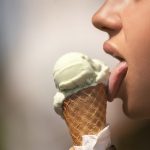
Telling whether there is a difference between two products is a major exercise in sensory science. Why conduct such tests ? Changing ingredients such as flavours in a drink from one supplier to another may make no difference or a slight one but have no perceptible influence on the decision to buy that product. A drinks maker might want to know if substituting a more expensive flavour with a cheaper variant will alter perception of the product. Can they use the new flavour ? How do they find out ? Likewise, changing some aspect of a process might alter the sensory characteristics of a product in some way but how is that known ?
Sensory scientists usually set out to define and then describe attributes of a product. This can take many forms but always involves some characteristic such as appearance, an aroma or odour, the feel of a product which includes its consistency and textre and finally the flavour which refers to taste or a particular aspects such as sweetness, saltiness etc.
The Sensory Team.
People evaluating a product may be trained or untrained. The untrained taster might be drawn from consumers. If they are experienced in tasting a particular product then they are semi-trained. The trained tasters are usually part of a panel and are ‘gifted’ to express expert, objective opinions about a product.
Sensory Testing Methods
Generally, the essential requirements are to use 25 different panelists or more who have been screened for their ability to smell and taste foods well. That means they have high acuity – a sharpness of perception when it comes to tasting a food. There are different types of discrimination test available such as triangle, duo-trio or paired comparison tests. Choosing the most suitable depends on the sensory scientist knowing and understanding the objective of the test. A large number of tasters is needed so that results are statistically significant when analysed carefully. This is mainly to make sure that any differences were real and the tasters did not choose a sample by luck.
These tests are limited. They tell the sensory scientist whether the two samples are different or not. More descriptive tests are needed to obtain more detailed information about a product but that is for another article.
Types Of Sensory Testing
A great variety of sensory test methods are available but they fall into two main groups, hedonic tests and analytical tests.
The analytical tests are further divided into two groups, the difference (or discrimination tests as they might be known) and the quantitative tests. You can split the difference tests further into four types which are:-
- Paired comparison
- Duo-Trio
- Triangle
- R-Index
We can also consider rating tests which are classified as:-
- Ranking test
- Simple sample (monadic) test
- Two-sample difference test
- Multiple sample difference test
- Hedonic rating test
- Numerical scoring test
- Composite scoring test.
The panel required for this would be trained.
The quantitative testing is split into three:-
- simple descriptive
- profiling
- time-intensity
All analytical tests are considered ‘instrumental’ measures of perceived quality.
The hedonic tests are divided further into preference testing, acceptability and what is termed ‘relative-to-ideal’. The difference between the analytical tests is that hedonic testing concerns the response of the tasters to perceived quality.
The Paired Comparison Test
The most common test. The objective is to compare one attribute such as which is the rougher or sweeter.
Here two coded samples are presented to the taster in either a sequence or simultaneously in a balanced presentation order. This is either AB or BA. Only two variations are possible in this test. Very often one of the samples is a standard or control sample whilst the other is experimental.
The Duo-Trio Test
Here three food samples are offered the taster. Two are the same whilst the other is different. One of the similar samples is called the control or reference sample. The taster decides which of the other two remaining samples is the same as the control. The responses from the tasters can also be used to describe the difference which can prove valuable in explaining any discrepancies.
Triangle Test
In this test three food samples are offered, again with two the same. The samples are randomly offered. The tasters are then asked to decide which is the odd one out. Again the response are recorded from the tasters. The two samples AB are offered in two combinations of AAB and BBA. There are six permutations: AAB, ABA, BAA, BAB, ABB and BBA.
The R-Index test
A test which is relatively rapid and has been described as a ‘short-cut signal-detection method’ (Kilcast,2010). The test samples are compared against a previously standard standard. The test sample is rated in one of four categories.
The Rating tests are as follows:-
Ranking Test
Several samples are presented to the taster which all differ in a single characteristic. The sensory panellists are presented with samples that have just a code number. The products are ranked according to a given characteristic or on a preference.
The Two Sample Difference Test.
The test is a variation of the paired test and measures the degree of difference. Each taster is served four pairs of samples. There are two pairs of duplicate samples with the other two pairs being the test samples to assess a particular characteristic. The test samples are compared to the standard. They are judged on a scale between zero which represents no difference to 3 which represents an extreme difference.
No guessing is allowed save through the coded duplicate standard in two pairs.
The Multiple Sample Difference Test.
The panellists are served between 3 and 6 samples to avoid exhaustion. All samples are coded. One of the samples is a control or standard sample. Each coded sample is compared with the known standard. One of the other coded samples is a duplicate of the sample. Guessing is not allowed. The direction and degree of difference is also judged.
Hedonic Scale Test
The test measures consumer acceptability for a series of products. The taster assesses each product in turn.
These are scored on a range which has a 5 or 9 point scale. It may be a tick box system where they rank from ‘dislike very much’ to ‘like very much’. Included in the tasting is the option to explain the reason for the tasting. Remarks about products’ appearance, smell, taste and texture. The results are analyzed to decide which sample is preferred.
The Composite Scoring Test.
The rating scale is defined so that a specific characteristic for a product is rated separately. The method is used to grade products by comparing quality attributes by indicating which characteristic is at fault in a poor product. It is better method for providing more information than any other numerical method.
The Numerical Scoring Test
In this test one or more samples are presented to each taster. The panellist evaluates each sample in turn using a specific scale for a particular characteristic indicating the rating of a sample. The panellists are trained to examine each sensory characteristic corresponding to an agreed quality description and score.
The Dilution Tests
These tests are designed to establish the smallest amount of an unknown material developed as a substitute for a standard product. The quality of the test material is represented by the dilution number. The larger the dilution number the better the quality of the test material.
Descriptive Analysis
Descriptive analysis is widely used to obtain and collate consumer’s sensory views and opinions on a product which may be food, clothing, a consumer healthcare product for example. Quantitative Descriptive Analysis (QDA) is a very important technique. For descriptive analysis, a minimum of 5 experts is needed. If the panel is untrained then a greater number is required. All these sensory experiments require standardized techniques and procedure designed before any evaluation. Statistical analysis is needed to interpret those sensory results.
General References
Kilcast, D. (Ed.). (2010). Sensory analysis for food and beverage quality control: a practical guide. Elsevier. (Book)
O’Mahony, M. (2017). Sensory evaluation of food: statistical methods and procedures. Routledge.
Stone, H., & Sidel, J. L. (1993). Sensory Evaluation Practices. Boston, MA: Elsevier Academic Press. 2nd edt. https://doi.org/10.1016/C2009-0-03318-2



Leave a Reply